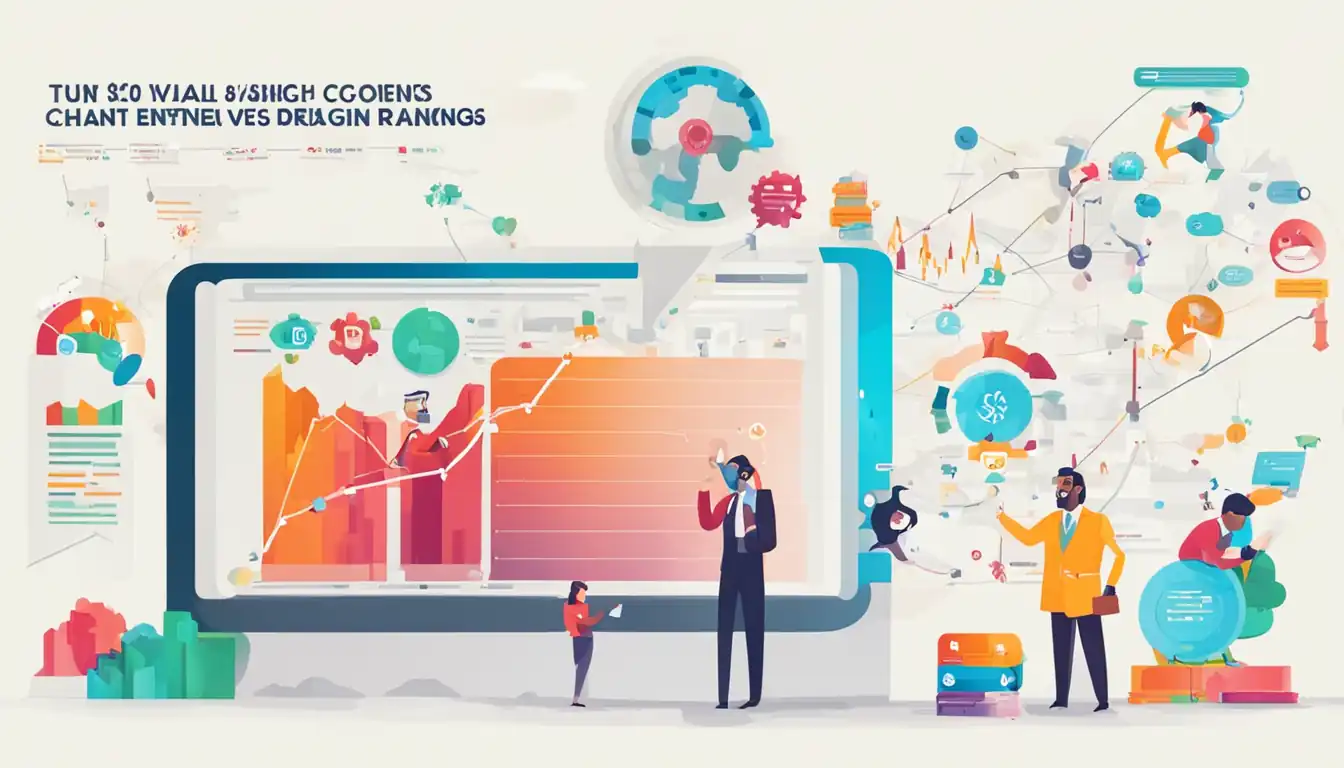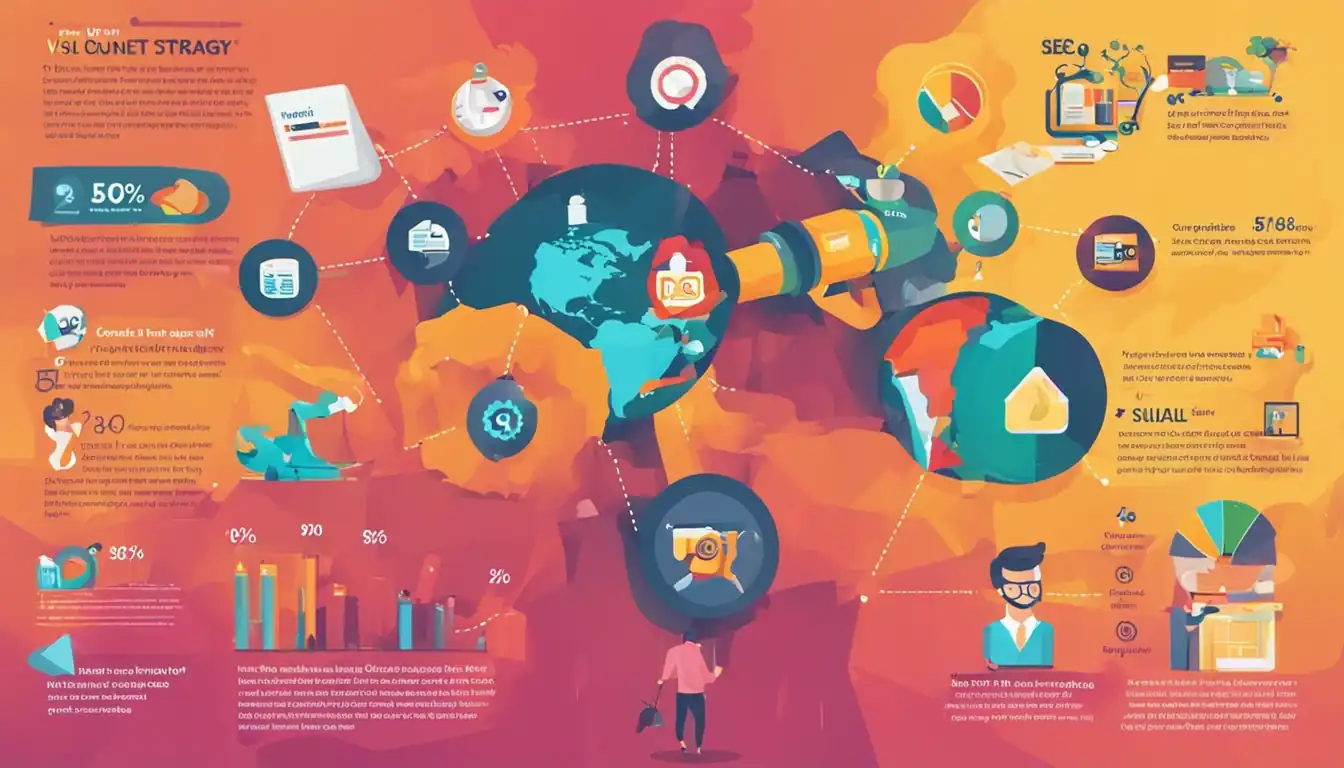Unlocking the Power of Visual Content for SEO

In the ever-evolving world of SEO, visual content has emerged as a powerful tool to boost your website's visibility and engagement. Gone are the days when text alone could capture the attention of online users. Today, incorporating high-quality images, videos, and infographics is essential for standing out in a crowded digital landscape. In this post, we will explore how visual content can unlock new opportunities for improving your SEO strategy and driving organic traffic to your site.
The Role of Visuals in Modern SEO

In the ever-evolving landscape of SEO, visuals play a crucial role in enhancing the overall user experience and boosting search engine rankings. Incorporating visual content into your website can significantly impact your SEO efforts and help you stand out from the competition.
How Images Enhance Readability and Engagement
Visual content, such as images, infographics, videos, and charts, not only make your website more visually appealing but also enhance readability and engagement. Users are more likely to engage with content that includes relevant visuals as it helps break up text and convey information in a more digestible format. Additionally, incorporating images can increase the time users spend on your site, which is a positive signal for search engines.
Search Engines and Image Recognition Advances
Search engines have become increasingly sophisticated in their ability to recognize and index visual content. With advancements in image recognition technology, search engines can now "see" images much like humans do. This means that optimizing your visual content with descriptive alt text, captions, and relevant keywords can improve its visibility in image searches.
"Visual content is not just about aesthetics; it plays a crucial role in enhancing user experience and boosting SEO rankings."
Crafting High-Quality Visual Content
Visual content plays a crucial role in SEO, as it can significantly impact user engagement and overall website performance. To unlock the power of visual content for SEO, it is essential to focus on crafting high-quality visuals that are not only visually appealing but also optimized for search engines.
Selecting the Right Types of Images
When selecting images for your website or blog, it is important to choose visuals that are relevant to your content and target audience. Consider the following types of images that can enhance your SEO efforts:
- Original Images: Using original images can set your content apart from competitors and improve its credibility.
- Infographics: Infographics are highly shareable and can attract backlinks, boosting your website's authority.
- Stock Photos: While stock photos can be convenient, try to customize them or use them sparingly to avoid looking generic.
By selecting the right types of images, you can enhance the visual appeal of your content while also improving its SEO performance.
Techniques for Creating Unique Visuals
Creating unique visuals is key to standing out in a crowded online landscape. Here are some techniques you can use to make your visual content more engaging and memorable:
- Use Brand Colors and Fonts: Incorporating your brand colors and fonts into visuals can help reinforce brand identity and make your content more recognizable.
- Tell a Story: Visuals that tell a story or convey emotions are more likely to resonate with viewers and encourage them to engage with your content.
- Optimize Image Alt Text: Adding descriptive alt text to images not only improves accessibility but also helps search engines understand the context of the image.
- Include Calls-to-Action: Encourage user interaction by including calls-to-action in your visuals, prompting viewers to take specific actions.
By implementing these techniques, you can create unique visual content that captivates users and boosts your SEO efforts.
Optimization Strategies for Visual Content
Visual content plays a crucial role in enhancing the overall user experience on a website. In addition to engaging visitors, visual elements such as images and videos can also have a significant impact on SEO. Here are some key optimization strategies for visual content that can help boost your website's search engine rankings:
Best Practices for Image SEO
When it comes to optimizing images for SEO, there are several best practices to keep in mind:
- High-Quality Images: Use high-quality, relevant images that enhance the user experience.
- Optimized File Size: Compress images to improve page load speed and overall performance.
- Image Format: Use appropriate image formats such as JPEG or PNG for better compatibility and quality.
- Image Sitemap: Include images in your XML sitemap to help search engines discover and index them.
Leveraging Alt Text and File Names Effectively
Alt text and file names play a crucial role in helping search engines understand the context of an image. Here are some tips for leveraging alt text and file names effectively:
- Descriptive Alt Text: Use descriptive alt text that accurately describes the image content.
- Keywords: Incorporate relevant keywords naturally into alt text and file names.
- Avoid Keyword Stuffing: While it's important to include keywords, avoid keyword stuffing which can be penalized by search engines.
- File Naming Convention: Use descriptive file names that reflect the content of the image.
By implementing these optimization strategies for visual content, you can not only enhance the user experience but also improve your website's visibility in search engine results pages (SERPs). Remember, visual content is a powerful tool that can drive organic traffic and engagement when optimized effectively for SEO purposes.
Integrating Visuals with Overall Content Strategy
In the world of SEO, visual content plays a crucial role in enhancing user experience and driving organic traffic to your website. By integrating visuals with your overall content strategy, you can unlock the power of visual content for SEO.
Aligning Images with Textual Content
When incorporating visual elements into your content, it's important to ensure that they align seamlessly with your textual content. This means using images that are relevant to the topic at hand and complement the written information. By aligning images with textual content, you not only enhance the overall user experience but also signal to search engines the relevance of your content.
Key Points:
- Choose images that support and enhance your written content.
- Ensure images are high-quality and relevant to the topic.
- Use alt text and descriptive file names for SEO optimization.
Strategic Placement of Visuals on Your Website
The strategic placement of visuals on your website can have a significant impact on your SEO efforts. Placing visuals strategically throughout your website can help break up text-heavy pages, improve engagement, and encourage users to stay longer on your site. Additionally, strategically placing visuals near key headings or within sections of text can help reinforce the main points of your content.
Key Points:
- Place visuals near key headings or within sections of text to reinforce main points.
- Break up text-heavy pages with visually appealing images.
- Use a variety of visual formats such as infographics, videos, and charts for added engagement.
By aligning images with textual content and strategically placing visuals on your website, you can effectively unlock the power of visual content for SEO. Incorporating visual elements into your overall content strategy will not only improve user experience but also boost your search engine rankings.
Measuring the Impact of Visual Content on SEO Performance
Visual content plays a crucial role in enhancing SEO performance by increasing engagement, improving user experience, and boosting website traffic. By incorporating visually appealing elements such as images, videos, infographics, and slideshows into your content strategy, you can effectively communicate your message to your target audience and improve your search engine rankings.
Tools and Metrics for Assessing Visual Content Success
To measure the impact of visual content on SEO performance, it is essential to use the right tools and metrics. Here are some key tools and metrics that can help you assess the success of your visual content:
Google Analytics: Track the performance of your visual content by monitoring metrics such as page views, bounce rate, time on page, and conversion rates.
Image Alt Text: Optimize your images with descriptive alt text to improve accessibility and enhance SEO.
Backlink Analysis: Monitor the number of backlinks generated by your visual content to gauge its influence on search engine rankings.
Social Shares: Measure the social engagement of your visual content by tracking likes, shares, comments, and mentions across various social media platforms.
Page Load Speed: Ensure that your visual content does not slow down your website's loading speed, as this can negatively impact SEO performance.
Case Studies: Before and After SEO Improvements
Let's take a look at some real-life case studies that demonstrate the impact of visual content on SEO performance:
Case Study 1 - E-commerce Website:
- Before: The e-commerce website had low organic traffic and poor search engine rankings.
- After: By adding high-quality product images, videos, and customer reviews to their product pages, the website saw a significant increase in organic traffic and improved search engine visibility.
Case Study 2 - Travel Blog:
- Before: The travel blog struggled to attract visitors due to lackluster visuals.
- After: By incorporating stunning travel photos, interactive maps, and engaging videos into their blog posts, they experienced a surge in organic traffic and higher search engine rankings.
These case studies highlight the transformative power of visual content in driving SEO improvements and achieving business goals. Incorporating visually appealing elements into your content strategy can lead to increased visibility, higher engagement levels, and ultimately better SEO performance.
Conclusion
As you navigate the complex realm of SEO, remember that visual content is not just a nice-to-have but a must-have element in your digital marketing arsenal. By understanding the role visuals play in modern SEO, crafting high-quality images and optimizing them effectively, integrating visuals into your overall content strategy, and measuring their impact on performance, you can unlock the full potential of visual content for SEO success. So go ahead, unleash the power of visuals and watch your search rankings soar!